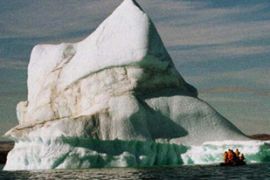Polar research to get boost
The 2007 International Polar Year will occur in the context of global warming.

“Close to 60 per cent of what is known about the polar regions, particularly the Arctic, comes from research carried out in 1958,” said Louis Fortier, scientific director of ArcticNet, a Canadian research network on the Arctic.
“The difference today is that the new polar year will occur in the context of global warming,” Fortier told AFP.
With a contribution of $150 million, Canada is the principal patron of IPY, followed by Scandinavian countries and the United States, which made a contribution close to $60 million.
“Canada‘s goal for the programme is to bring foreign researchers to the Canadian Arctic, which is more than a third of the Arctic. The Russian portion is much less accessible,” Fourtier said.
Human dimension
Scientists studying the Arctic in the past limited their work to biological, geographical and physical sciences, but they will now examine the impact of climate change on humans.
“The other difference between this year and the previous polar years is the very explicit inclusion of what we call the human dimension,” said David Hik, an Arctic expert at the University of Alberta.
“The previous polar years were an effort to understand the physical sciences and to a less extent the biological sciences, but this polar year embraces all science disciplines,” Hik said.
“And particularly in the Arctic, it is really difficult to do science the way we did 50 years ago. The science has to be relevant to people who live in the North, and the reason to include them in the scientific research is to make sure they share the benefits of investment in the polar year,” Hik said.
The Inuits in the past were subjects of research, but now they want to be “partners in the research,” Fortier said.
International efforts
About 150,000 Inuits live in Arctic regions extending across the US state of Alaska, Canada, Greenland, the Scandinavian countries and Russia.
Organisations such as the Inuit Circumpolar Conference have already confirmed their participation in the International Polar Year.
Most of the planned research projects must still be approved by different countries before launch in March, with the work to be carried out over two years.
“The two years are standard for a polar year because you need two observing years to collect the information. But in terms of the results they will be coming out in 2009-10,” said Kathleen Fischer, executive director of the Canadian IPY program office.
The IPY research should shed light on the state of the climate system now and allow for forecasting over the next five years and beyond, Fortier said.
Scientists and donor countries are already focusing on shaping a legacy for the IPY research effort.
“One of the questions we have is the legacy of the polar year,” said Hik.
“One of those legacies involves the training of the next generation of polar scientist not just in Canada but around the world.”